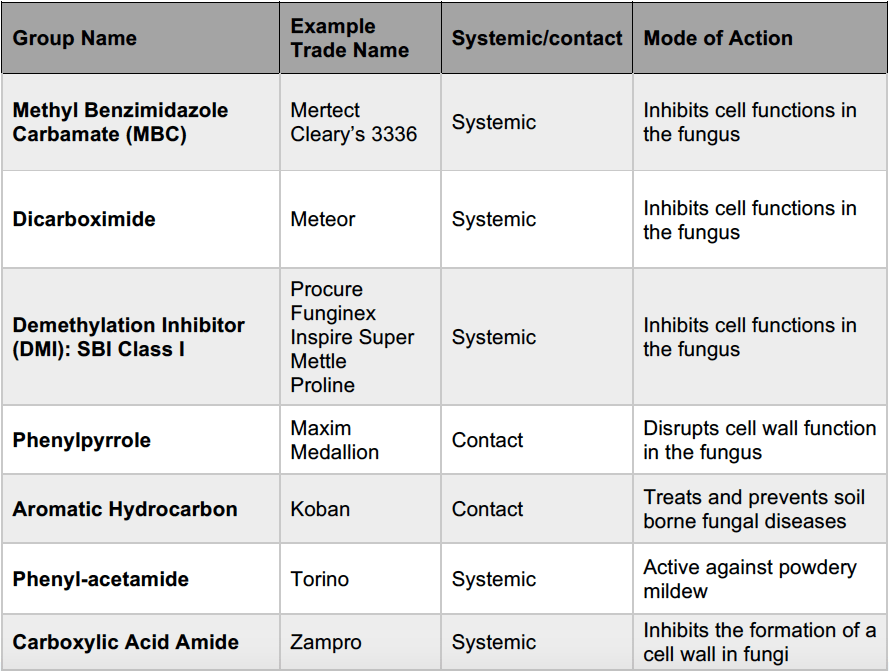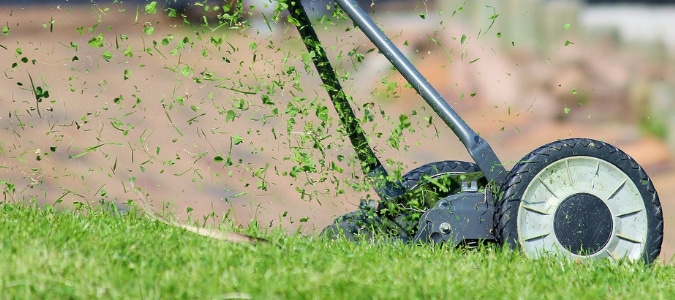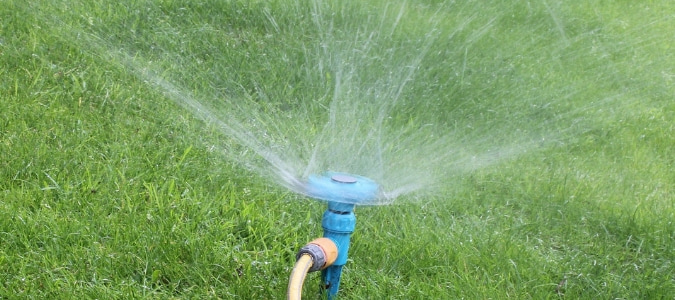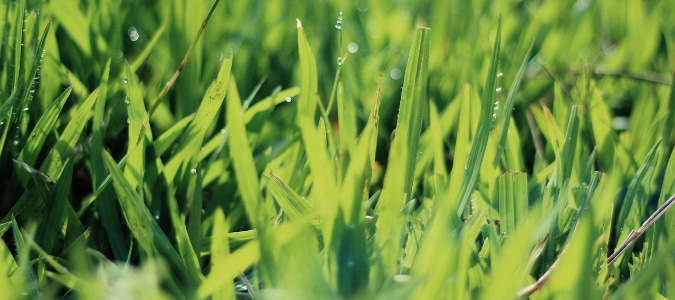
Homeowners lead busy lives, with a seemingly endless list of things that need to be done at any given time. Faced with the reality of juggling work, home and recreation, it’s easy for your lawn to become an afterthought.
As much as we wish this wasn’t the case, healthy and well-manicured lawns don’t take care of themselves. First, you need to make sure your grass is getting the amount of water and sunshine it needs—and not too much. Then, you need to make sure you are mowing your grass to the proper height. Although most homeowners stop here, to keep your lawn happy and looking great you’ll also want to have an understanding of your soil chemistry to determine what nutrients might be lacking.
What are some of the risks you run if you don’t care for your grass? Lawn diseases, weeds and a dead, yellow lawn, just to name a few.
Lawn fungus can look like brown, patchy grass. What can you do about it?
Ignore it and hope the situation improves? Choose one of the fungicide treatments and cross your fingers it works? If you decide to ignore the problem and it doesn’t go away, you may start researching when to apply fungicide on lawns.
The short answer to the question is that you should apply a fungicide as soon as disease symptoms are discovered on the lawn. Why? Because while fungicides will destroy any fungus that might be damaging your lawn and stop the fungi from spreading, they can’t reverse the damage already caused by the fungus.
In other words, the sooner your stop the fungus from progressing, the better off your lawn will be.
How can you even tell if your yard is dealing with a fungus, though?
While the best way to understand what you’re dealing with is always to work with an expert, below we’ve put together a guide that we hope will clear up many of your questions about using fungicide–starting with that last question.
How To Tell If Your Lawn Has A Fungal Disease
Your lawn is an ecosystem comprised of a vast multitude of organisms, including fungi. When everything is in balance, fungus will not grow. However, several factors may disrupt this equilibrium, causing fungi to overrun your lawn and consequently become a problem.
Various factors have been found to encourage fungal overgrowth on lawns. These include:
- Improper mowing, particularly very low mowing
- Overwatering
- Overapplication of fertilizers
- Inappropriate fertilizer type
- Planting grass strains that are susceptible to fungal diseases
- Elevated temperature and humidity
- Drought
The most obvious sign of lawn disease is a dead or dying segment on your lawn. However, not all dead and dying spots are attributable to fungus, so you should consider other possible causes as well.
Classical signs of fungus in a lawn include:
- Brown, white or yellow rings or patches that seem to grow in diameter over time
- Parts of the lawn that may appear darkened, slimy, wet or gray
- Black, purple, grey, orange or red spots on the blades and/or stems of the lawn grass
- Grass blades which may appear frayed, discolored and/or distorted
Lawn disease thrives when:
- The grass species on the lawn are susceptible to the disease-causing fungus
- The environmental conditions favor fungal growth and proliferation
- The homeowner fails to take the appropriate countermeasures against the lawn fungus in good time
Lawn Fungus Types: What To Look For
What is brown patch? How serious is root rot? The following are two of the most common diseases that are likely to develop on warm-weather lawns. Do keep in mind that there is a wide variety of fungal diseases that can affect your lawn. If you aren’t quite sure what’s wrong with your lawn, call a lawn care company to help diagnose the problem.
Brown Patch
This is one of the most common fungal ailments that attack lawns in the US. The leaves and stems of the lawn grass die out in big round patches. The disease mostly strikes during warm to hot weather (between 70 and 95 degrees Fahrenheit), which is most of the year in southern states. It’s also common in areas with high humidity and excess rainfall. Heavy thatch and over-fertilizing predispose a lawn to brown patch disease.
Brown patch can affect all cool-season lawn grasses, as well as warm season grasses such as Zoysia grass and St. Augustine.
Take-All Root Rot
Root rot is exactly what it sounds like: roots become short or black, and the stolons can be pulled out of the ground without much effort. One of the worst things about root rot is that it’s easy to mistake for something else unless you’re really looking for it. Often, people will notice a problem but assume that it is something like insects causing damage.
Using Lawn Fungicides To Cure Lawn Diseases
Different people use different strategies to treat fungal diseases in their lawn. However, one of the most effective countermeasures against lawn fungus is the use of fungicides.
Fungicides are chemical products that destroy, prevent and mitigate fungal growth on plants. Lawn fungicides may be applied as dust, granules or sprayed as a gas or in a liquid solution. Sprayers are commonly used to apply fungicides onto lawn foliage. Knowing when to apply fungicide on lawns is very important. Repeat fungicide applications are often required to achieve effective control over a lawn disease and to prevent new fungal growth.
Best Fungicide For Lawns: What Should You Look For?
Just like human medicine, fungicides work in different ways. However, the best fungicides have the following characteristics:
- First and foremost, they have been proven to be effective by quickly killing the lawn fungus. You can read online reviews to get a sense of whether other homeowners have found them to work.
- They offer protection against future fungal growth and attacks.
- There’s zero or minimal resistance to the fungicide by the specific lawn fungus.
- The fungicide doesn’t pose a health risk to the people and pets who use or play on the lawn.
- The fungicide is low impact, to minimize any damage to the larger environment.
The success of a fungicide depends on its mechanism of action and fungicidal activity. Primarily, fungicides destroy lawn fungus by damaging their fungal cell wall and cell membranes. They may also inhibit vital cellular processes within the fungus, thereby killing it.
The best fungicides are those that have been designed to incorporate several killing mechanisms as part of their mode of action. This not only makes the fungicide more powerful, but also reduces the risk of resistance and tolerance development.
Systemic Fungicides
Once a systemic fungicide is sprayed on the lawn, the solution is absorbed by the plant. The fungicide then moves through the plant to reach the parts we cannot see or easily reach. As such, systemic fungicides may also be referred to as mobile-systemic or penetrant fungicides.
Contact Fungicides
Unlike systemic fungicides, contact fungicides do not enter the plant. They remain on the surface and create a protective barrier that restricts fungal growth.
Preventive Fungicides: How They Work
Contact fungicides are sometimes called residual fungicides. This term describes the ability of these products to remain on the plant surface for several days after application. During this period, they offer continued protection against fungi. They are therefore prophylactic against a number of fungi species that cause lawn diseases.
The preventive benefits offered to plants remain as long as the fungicide doesn’t get degraded by environmental elements such as sunlight or washed off by irrigation, wind, or rain. Repeated applications are therefore essential to ensure that the fungicide stays on the plant and continues to provide protection from fungi.
List Of Fungicides And Uses In The US
What are some of the more common types of fungicides used here in the United States? The graphic below lists some of the most common treatments, along with the fungicide type, the mode of action and an example of a product you could pick up from the store with that kind of fungus fighter in it.

Many of these items can be purchased at home improvement stores or online.
Too Much Fungicide: Lawn Care No-Nos
Fungi often develop resistance and/or a tolerance to fungicides. When this happens, the fungicides become ineffective in combating the lawn fungus. This results in homeowners using more and more fungicides on their lawn without getting the fungal disease to go away.
Using too many fungicides on your lawn is bad for the environment. It may also pose a health risk to pets and young children in your home. On top of all that, it’s likely to burn a hole in your pocket.
Fungicide rotation is the recommended way of fighting lawn disease. Get two or three fungicides with different modes of action. After one or two treatments with one fungicide, switch to the next and keep rotating until your lawn is completely free of disease.
Generally, it is advisable to reapply fungicides every two to three weeks, or as needed. Finally, you should pay attention to local disease forecasting systems to know when to apply protective fungicides, which fungicides to use, as well as how to apply them.
Fungicide application may also be guided by personal experience. If, for instance, your lawn gets a brown patch during summer, start applying fungicides in spring and continue doing so throughout summer to protect your yard.
ABC Can Care For Your Lawn
Still feeling overwhelmed? There’s no reason why you have to deal with lawn problems alone. Reach out to ABC and we’ll have our lawn experts come out to determine what the issue is and how best to handle it. We can also provide you with seasonal fertilization treatments to keep your yard nourished and healthy.




